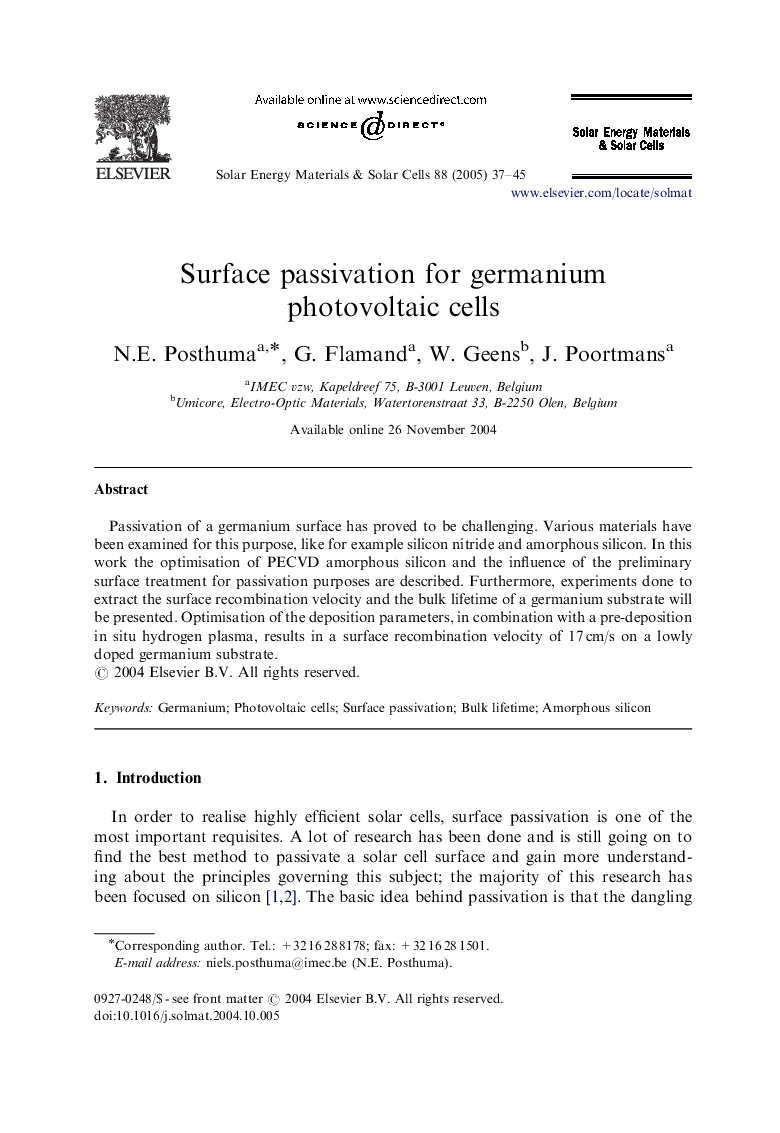| Article ID | Journal | Published Year | Pages | File Type |
|---|---|---|---|---|
| 10248922 | Solar Energy Materials and Solar Cells | 2005 | 9 Pages |
Abstract
Passivation of a germanium surface has proved to be challenging. Various materials have been examined for this purpose, like for example silicon nitride and amorphous silicon. In this work the optimisation of PECVD amorphous silicon and the influence of the preliminary surface treatment for passivation purposes are described. Furthermore, experiments done to extract the surface recombination velocity and the bulk lifetime of a germanium substrate will be presented. Optimisation of the deposition parameters, in combination with a pre-deposition in situ hydrogen plasma, results in a surface recombination velocity of 17Â cm/s on a lowly doped germanium substrate.
Related Topics
Physical Sciences and Engineering
Chemical Engineering
Catalysis
Authors
N.E. Posthuma, G. Flamand, W. Geens, J. Poortmans,
